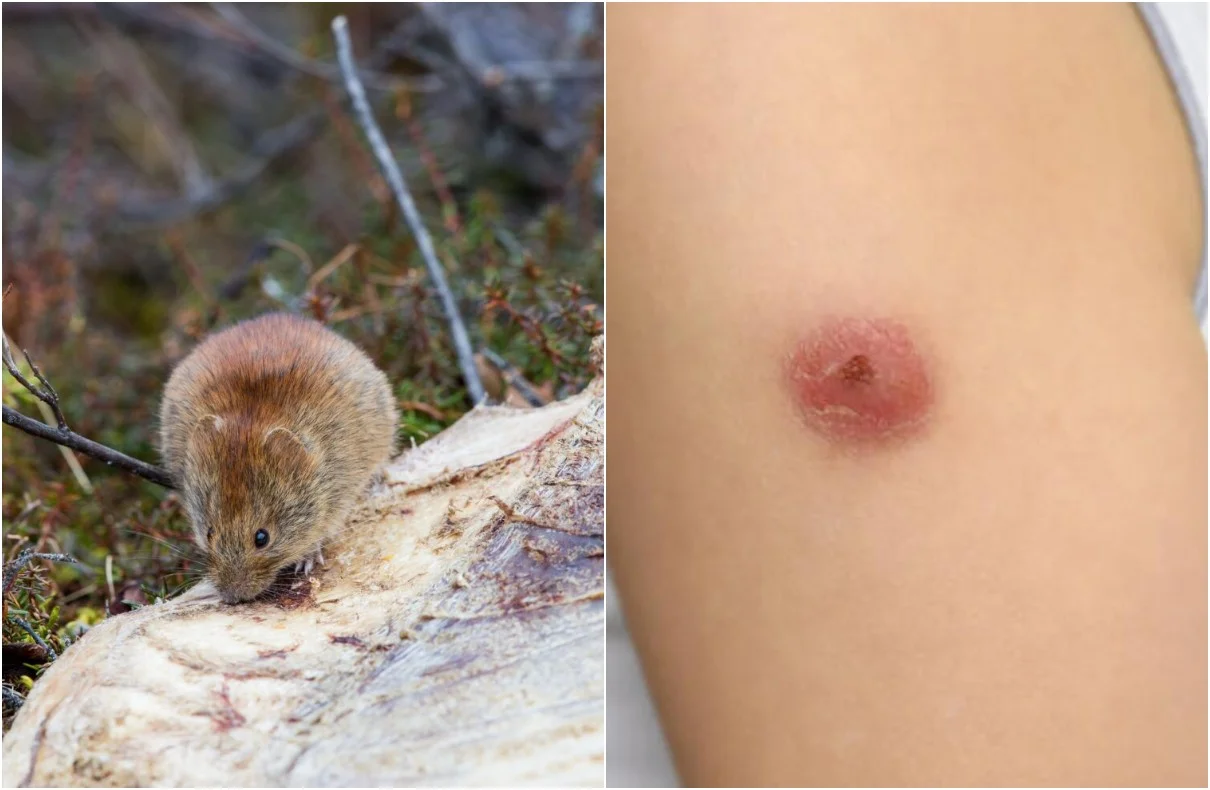
Alaskapox, a newly discovered viral disease, has claimed its first known victim – an elderly man from Alaska. This rare and potentially lethal illness has raised concerns about its spread, symptoms, and severity.
Alaskapox, also known as AKPV, is a double-stranded DNA virus that primarily circulates among small mammals in the state of Alaska. It is classified as a zoonotic disease, meaning it can be transmitted from animals to humans. Alaskapox belongs to the orthopoxvirus family, which also includes well-known viruses like smallpox, camelpox, cowpox, horsepox, and mpox (formerly known as monkeypox).
The first documented case of Alaskapox occurred in 2015 when a woman living near Fairbanks, Alaska, presented with a localized rash and swollen lymph nodes. Since then, a total of seven cases have been reported, all confined to Alaska. The virus has primarily been found in small mammals, such as red-backed voles and shrews. However, health officials warn that household pets may also carry the virus.
Alaskapox is believed to primarily spread through direct contact with infected animals. To date, there have been no documented cases of human-to-human transmission. However, it is worth noting that other viruses within the same family can spread through contact with lesions. As a precautionary measure, Alaska health officials recommend covering any Alaskapox lesion with a bandage to prevent potential transmission.
Discover the Perfect Amount of Protein to Boost Your Energy
The symptoms of Alaskapox typically manifest as one or more bumps or pustules on the skin, accompanied by joint or muscle pain and swollen lymph nodes. In the majority of cases, the illness is mild and resolves on its own within a few weeks without requiring medical intervention. However, the severity of the disease can vary depending on the individual’s health condition and immune system.
Sadly, the elderly man from the Kenai Peninsula became the first recorded fatality attributed to Alaskapox. He was undergoing treatment for cancer, which weakened his immune system, making him more susceptible to severe complications. Initially, he noticed a red bump in his armpit, which was treated with antibiotics. However, his condition worsened over time, leading to respiratory and kidney failure, ultimately resulting in his demise.
As of now, all documented cases of Alaskapox have been confined to Alaska, with six of them occurring in the Fairbanks North Star Borough. The recent case of the elderly man from the Kenai Peninsula raises questions about the potential spread of the virus to other regions. While health officials have yet to comment on this possibility, ongoing animal trapping studies suggest that the virus may be present in a broader range of Alaska’s small mammal population.
To minimize the risk of contracting Alaskapox, health officials recommend maintaining a safe distance from wildlife, practicing good hand hygiene, and avoiding the keeping of wild animals as pets. If any lesions are found, they should be covered, kept dry, and not touched to prevent further spread of the virus.
Given the limited knowledge surrounding Alaskapox, extensive research and surveillance efforts are underway to better understand the distribution of the virus among Alaska’s animal populations. Animal testing is being conducted to identify the presence of the virus in various species and regions throughout the state. This data will contribute to future prevention and control strategies.
